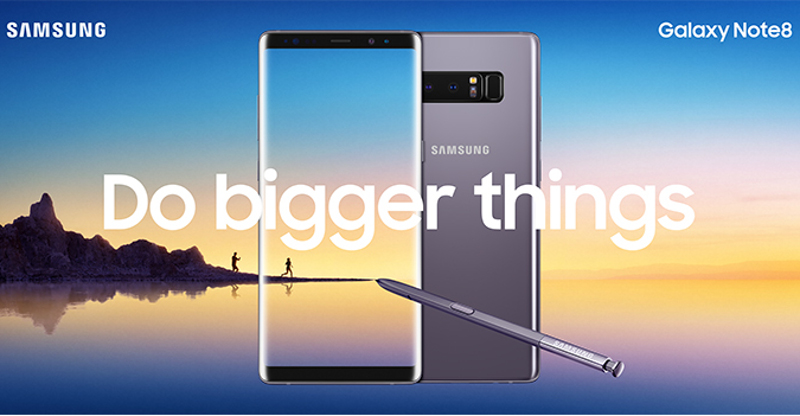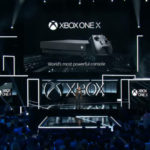Samsung heads into CES 2026 with momentum Samsung Electronics is closing out 2025 with a strong signal of where its future tech ambitions lie….
First look: Samsung Galaxy Note 8

Another smartphone has taken its first, nervous steps into the South African market. It bears the sigil of a well-respected house, but wears a name that has come under fire in recent months.
Samsung yesterday launched its Galaxy Note 8 in New York, a launch many billed as the most important for the company in recent years.
Not only is the Note 8 the most feature-packed device the company has ever made, but it’s also tasked with righting the Note 7’s wrongs.
Granted, the general public and airports across the world have largely forgotten the fiasco, and Samsung was quick to thank those who stood by the brand through the furore.
But has its fans’ patience and trust paid off?
Based on a brief affair with the phone at a satellite launch in Johannesburg, I’d have to say yes.
Firstly, the Samsung Galaxy Note 8 is a monster. It boasts a 6.3-inch 2960×1440 screen that occupies more than 80% of the device’s face. It also gives Samsung a 0.3-inch lead over Huawei’s Mate range.
Size seemingly does matter in 2017.
Handling the device isn’t more cumbersome than the Galaxy S8 though. That’s largely thanks to its 18.5:9 screen ratio, slim bezels and sharper screen taper on its sides. It feels more like an LG G6 than any of Samsung’s recent smartphones when in the hand.
The screen uses the same AMOLED technology as the Galaxy S8, and it shows, with deep contrasts and bright hues. It’s easily one of the unique selling points on the Note, and is the basis of the phone’s multimedia ambitions.
What about the cameras?
Speaking of which, at the rear, the Note 8 shares another similarity with the G6: a dual camera setup.
Two 12MP cameras — one telephoto, the other wide-angle — snap images simultaneously, giving the phone notable focussing abilities. Samsung calls it Live Focus, and lets users adjust the focus on the fly, even after the picture is snapped.
You can also do this on Huawei’s newer devices, but Samsung does save both the wide-angle and telephoto snap. This negates the need to choose which camera you actually want to use.
Liked the Galaxy S8 but wanted a stylus and dual-cameras? The Galaxy Note 8 seems to fit the bill
In general, camera quality in the dimly-lit demo room was comparable to the S8.
Dare I say it didn’t exactly blow me away. Pro Mode left me wanting more control over subtleties, while auto mode didn’t inspire confidence with noisy, muddy snaps. Then again, it would be unfair to judge a smartphone camera purely on its launch environment.
Samsung also mentioned the usual suspects: Dex, Bixby, Bixby Voice, the company’s desire to build an ecosystem with the Galaxy devices at its centre, and its VR ambitions.
The Note 8 will be compatible with Dex, while Bixby will once again get a dedicated hardware button on a Samsung smartphone. The company is also looking to build a hardware and software ecosystem, through Bixby and its app suite.
Finally, let’s talk software and the S-Pen.
Samsung’s take on Android
TouchWiz has seen massive improvements since the Galaxy S4 days. Now the enhanced version of Android feels a part of the device it calls home, and with Bixby, Samsung hopes to meld hardware and software even more acutely.
Navigating the device takes some getting used to — for a Microsoft Arrow advocate — but it’s as slick as the S8. Again, Samsung’s flagship devices are remarkably similar in performance and feel on-screen.
There is one key difference though…
The latest version of the S-Pen — Samsung’s smart stylus — feels sturdy yet forgiving when used on the screen itself. Notably, the stylus is more attuned to using Samsung’s native apps (think Notes, etc) and for some this will be an issue.
But investing in Samsung’s app ecosystem does boast a few benefits. For instance, the Notes app now allows users to jot down thoughts when the screen is “off”, subsequently saving battery.
If you’re a social creature, you can now also draw your own emoji and patterns to send to friends. Samsung noted that these creations can be used on a number of messaging apps.
Overall, the Galaxy Note 8 doesn’t leave you starstruck, lacking theatre of previous Samsung devices. But for many (myself included), that’s entirely the point.
While the Note 5 and Note 7 were flash, the Samsung Galaxy Note 8 is an understated powerhouse, not overdesigned for fashion’s sake, but rather created with function in mind.
We’ll have a full review of the device on Gearburn in the coming weeks, but expect the phone to launch in South Africa on 22 September.



